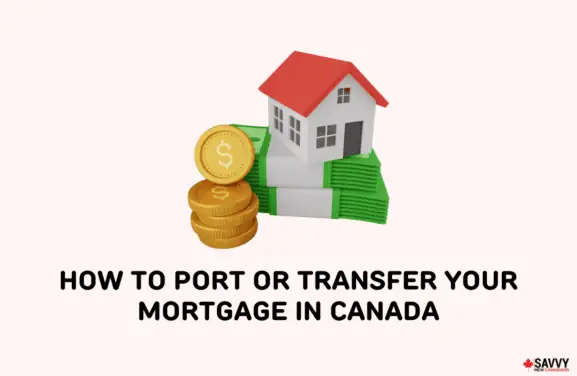The Smith Manoeuvre is a strategy that is used to convert the interest you pay on your mortgage into a tax-deductible investment loan interest. The strategy derives its name from the financial planner, Fraser Smith, who developed it and wrote a book about it in 2002.
In the United States, many homeowners can deduct their mortgage interest which they report on Form 1040 (Schedule A) when filing their taxes. However, in Canada, interest paid on mortgage loans for your personal residence is not tax-deductible.
The most recent tax code updates in the U.S. are also expected to decrease the number of homeowners who can use this popular deduction going forward.
I have been interested in the Smith Manoeuvre for a while, seeing that we still have a large mortgage, and I have been thinking about all the possibilities – start investing today using mortgage payments, maximize compounding interest over time, and deduct interest expense at tax time.
The Smith Manoeuvre is not a super-complicated strategy, but you need to look closely at your risk tolerance, financial discipline, investing horizon, and the general economy to see if it’s a strategy you are comfortable with taking on.
How Does The Smith Manoeuvre Work?
To understand how the Smith Manoeuvre works, let’s first look at what a general mortgage look like:
General Mortgage
When you obtain a “normal” mortgage, you are required to provide a down payment towards purchasing the house. The minimum down payment depends on the price of the house you are buying, and for most homes is equal to at least 5% of the purchase price.
As you continue to pay down your mortgage, you build equity, and when your equity exceeds 20% of the home’s value, you can take out a Home Equity Line of Credit (HELOC).
In general, you can borrow up to 65% of the value of your home through a HELOC. Combined with your mortgage balance, your maximum debt should be no more than 80% of the value of your home.
Your HELOC can be used to pay for pretty much anything, including renovations, down payment on a second property, vacation, investing, and more.
The traditional HELOC works like the typical line of credit – you are approved up to a certain limit, and if you want to increase your credit limit, you will need to talk to your bank.
The Re-advanceable Mortgage and HELOC
For the Smith Manoeuvre, you will need to obtain a “re-advanceable mortgage.” This is slightly different from the traditional mortgage loan in that it comprises a mortgage loan and a HELOC.
In this case, the HELOC limit increases as you pay down your mortgage and gives you more room to access your mortgage equity directly.
The idea here is that normally when you take out a loan to invest in, say, stocks (for example) or a rental property, the interest you pay on the loan is considered a deductible expense, and it will reduce your taxable gains/profit/income at tax time.
When you buy a home that you plan to live in and take out a mortgage, you are required to make periodic mortgage payments to your bank comprising of principal and interest.
However, the problem in this scenario is that the interest portion of your mortgage payment is not a deductible expense in Canada because the house is your residence and not a rental.
What the Smith Manoeuvre does is convert your mortgage loan into a type of “investment loan” that qualifies for interest deduction at tax time. To actualize this interest deduction strategy, here are the steps you need to take:
1. Obtain a re-advanceable mortgage loan from a lender. This mortgage comprises a regular mortgage and a re-advanceable HELOC, which increases by the same amount that your mortgage is paid down. This means the more principal you pay, the more funds you have in your HELOC.
2. Use funds in your HELOC to invest in income-producing investments, such as dividend-paying Canadian stocks, ETFs, or mutual funds. You can also invest in a rental property.
3. Deduct interest paid on your HELOC when filing your taxes. This should result in a tax refund that is based on your marginal tax rate. For example, if your marginal tax rate is 38% and your interest deductions are $10,000, you can expect $3,800 (i.e. $10,000 x 0.38) in a tax refund.
4. Re-invest the interest tax refund and other proceeds from your investment portfolio (dividends, rent) to pay down your mortgage. This automatically increases your available HELOC limit and funds available to buy more investments.
5. Rinse and repeat steps 2 – 4 until you pay off your mortgage.
Income-paying assets are great because they produce additional income that helps to pay down your mortgage faster. Dividends are also taxed more favourably than interest or regular income.
Smith Manoeuvre Example (simplified)
Mr. Dele has a home worth $500,000 and a mortgage of $300,000. He currently pays a monthly amount of $2,350 towards the mortgage loan, of which $1,350 goes to the principal, and $1,000 is interest fees. Through a re-advanceable mortgage, he has access to a HELOC limit of:
$400,000 ($500K x 80%) – $300K = $100K in HELOC funds available for investing
Note that the calculation takes into consideration that the maximum he can borrow (including the mortgage balance) is 80% of the value of the home. So, while the 80% Loan-to-Value is $400K, deducting the mortgage balance of $300K leaves us with $100K.
In addition to the $100K, he gets an additional $1,350 increase in his HELOC balance after he makes each monthly mortgage payment. This is from the principal portion of the monthly payment he makes towards his mortgage balance.
Assuming he uses up $50K to invest in a particular year and the HELOC charges an interest rate of 3.0%, the interest expense of $1,500 ($50,000 x 3%) can be deducted come tax time.
Re-Advanceable Mortgages in Canada
Re-advanceable mortgage offerings by banks in Canada include:
- Scotiabank: Scotia Total Equity Plan (STEP)
- BMO: Homeowner ReadiLine
- National Bank: All-In-One HELOC
- CIBC: Home Power Plan
- TD Canada Trust: Home Equity FlexLine
Risks vs. Rewards of the Smith Manoeuvre
As you can probably appreciate by now, the Smith Manoeuvre is a risky investment strategy. What you are trying to do is leverage your investments using debt. And, what leverage does is amplify your outcomes, good and bad.
If your investments perform well, you will have increased your net worth.
If your plans do not work out, e.g. due to poor investment asset choices, crazy markets doing their thing, or behavioural biases, etc., your losses could easily push you into a financial crisis.
Leveraged investing requires you to be risk-loving or at least have an above-average risk tolerance for risky ventures.
To increase your chances of the Smith Manoeuvre working out, you are also better off having time on your side. This is why some of the strategy’s main proponents advise that you be prepared to invest for the long term, i.e. 20 years or longer.
A long-term approach means that you have time on your side to wait out a market downturn.
Other Things To Consider For the Smith Manoeuvre
- Your maximum HELOC plus mortgage balance cannot exceed 80% of the value of your home. You do not have to use all the funds available through your HELOC – only invest the amount you are comfortable with.
- You will need to keep track of all your investments, dividends, interest payments and deductions to ensure you can explain yourself if CRA decides to audit your tax return.
- For the Smith Manoeuvre strategy to make sense, your investments should generate a return that exceeds the interest rate you are paying on your HELOC.
- Registered investment accounts like the RRSP or TFSA do not work for the Smith Manoeuvre. Your investment holdings have to be held in a non-registered account.
- If you choose to use the income earned (dividends, rent…) to pay down more of your mortgage principal, you will end up paying off your mortgage faster.
- If you do not intend to use investment income to speed up your mortgage payments, you can choose to go with well-diversified funds that can be held for the long term. By deferring your capital gains to the future, you can benefit from even more favourable taxation on capital gains compared to dividends and interest income.
- The Smith Manoeuvre does not change the principal residence exemption status of your home. If you sell your home later, it will not be subject to capital gains tax as a result of using this strategy.
- After paying off your mortgage using the Smith Manoeuvre, you should ideally now own a sizeable investment account and can choose to either: sell off some of your investments to pay off your HELOC debt or keep your investments and just keep paying any interest due on your HELOC loan. Interest amounts paid on the HELOC will remain deductible.
- The Smith Manoeuvre is not for risk-averse investors. Leverage will amplify your gains and worsen your losses. Consider seeking financial advice from a professional if you are considering executing this strategy.
For more details on how the Smith Manoeuvre works, check out the following useful resources by Million Dollar Journey, Ed Rempel, and Robinson Smith.
Recommended Reading:
- Wealthsimple Robo-Advisor Review ($75 cash bonus)
- Best Brokerage Platforms in Canada
- Best Money Management Apps for Canadians
- Tangerine Mortgage Rates
Smith Manoeuvre: Closing Thoughts
The jury is still out on whether or not I will proceed with utilizing the Smith Manoeuvre for our mortgage. For me, the attraction of the strategy is the ability to put funds towards investing early on and incrementally while paying down our mortgage.
This helps us use the time to our advantage and direct more dollars toward building our portfolio without waiting until we are mortgage-free.
One major sticking point for me though is the time involvement I feel this strategy will require if it’s to be done successfully. The need to track how your HELOC is invested, dividends, return of capital, how much interest is tax-deductible, and so on.
I’m not sure I have the time to devote to doing any of this…more so, I have gotten used to the “set-it-and-forget” automated investing where I only go in once a year to re-balance my portfolio.
We will see how it goes!




@Steve:
You have a good point about market correction. Indeed if there is a significant fall-back in the markets in the next few years or so, I would be doing a bit of leveraged investing to hopefully cash-in on the eventual market recovery. As for the Smith Manoeuvre in general, I like the idea…but still hesitant considering the work it may involve.
Hello,
What’s recommendation on to maintain proper trail for tax audit management:
I have multiple sources of funds to invest in the non-registered accounts:
1) HELOC -> HELOC Chequing Account
2) Personal Line of Credit -> Line of Credit Chequing Account
3) Cash Account (Savings)
I was thinking of pooling the money into one non-registered account for various investments strategies
1) Capital Gain
2) Avoid ROC ETF/Mutual Funds
3) Convert currencies and transfer out to Lending Loan P2P
As long as everything is “invested” and just occasionally in cash or in bond when divested from the equity markets,
There may be times to unwind the loan by transferring back the capital to the lines of credit and not use it all up.
Would this be easy to claim tax deductible on interest paid in the year, from all the loans with the main key point being that I’m pooling funds from multiple sources (some are loans and some are cash) to invest?
Would this be complicated for keeping a trail of where the funds are going to show it’s used for investments and the types of investments even though the funds are coming from multiple sources and its not necessarily? (Given that there may be capital losses, dividends, (avoid roc), interests)
Or should there be separate non-registered accounts and more alignment between source of funds (i.e. 1 Savings Cash account and the Line of Credit -> Non Registered Account 1 (Invest in Index Funds for example),
Thanks,
Would a cash-out refinancing might be a better option than HELOC? One can get a cash-out refinancing at much lower rate than HELOC and it should the interest portion of the payments should be tax deductible as well.
Great article. I bought the book and it reeked of snake oil salesman. There were no downsides listed and it constantly wanted to upsell you to buy more. Your article is much more balanced and practical. I am on the fence whether it is worth it either. There is a risk with interest rate changes, with the rate of return, and the potential tax changes. You could be all in with this strategy and the tax act could change and you need to sell off investments at a market low.
Great article.